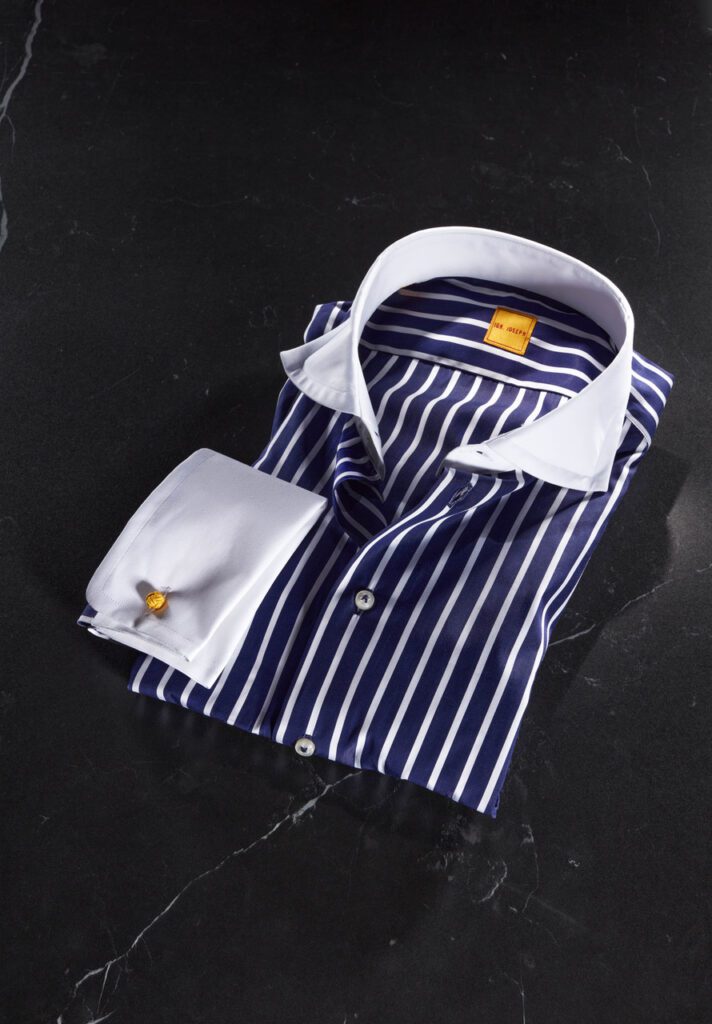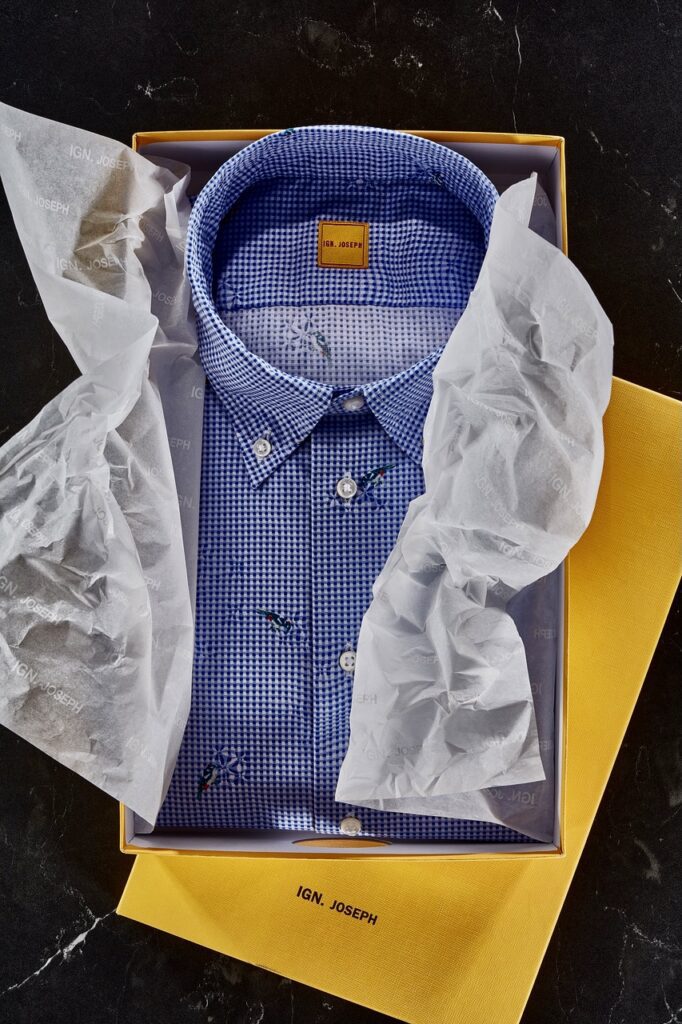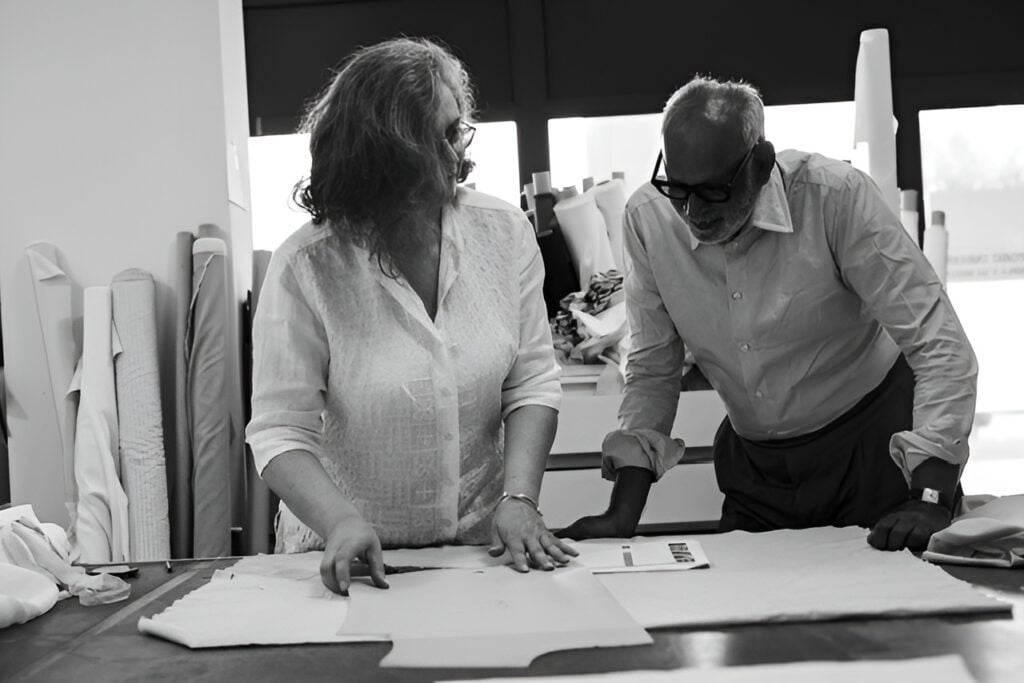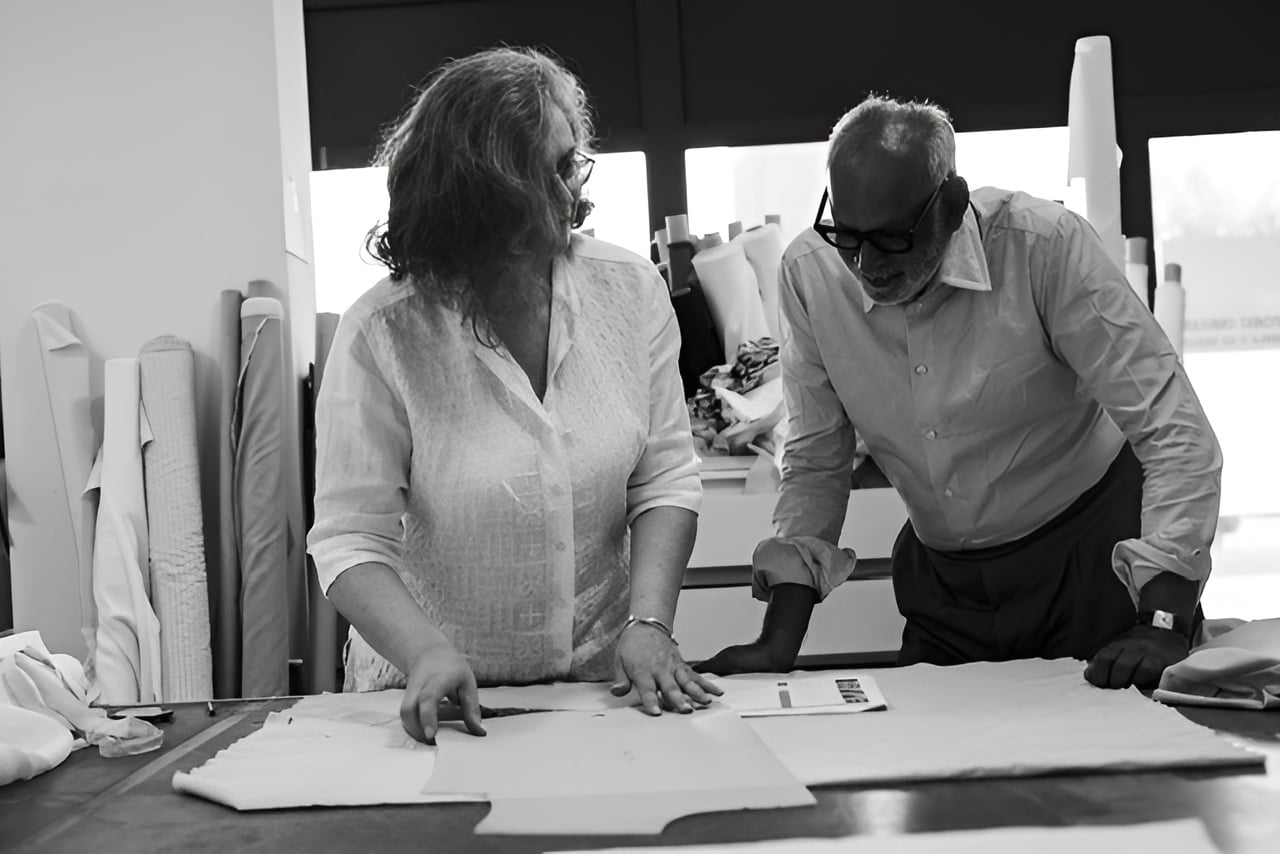Any consideration of the men’s shirts must begin with some historical perspective. Until the beginning of the 20th century, the shirt was an undergarment. The only stylistic elements of relevance were collars, cuffs, and the waistcoats that covered this element of men’s clothing.
“For a long time, dress shirts were made with detachable cuffs and collars. It was only in the 1950s that wearing a shirt exposed – i.e. without a waistcoat, was even considered properly dressed.“

With the dominance of the so-called sack suit, a two-piece combination of trousers and jacket, the waistcoat was no longer deemed essential. Three-piece suits were still a favorable attire option among the liberal professions, like law and accounting, and high commerce positions like banking.

Here one must differentiate between the emerging US American style — giving up the waistcoat — and the British style which retained the waistcoat well into the 1980s when the influence of American business and finance of the Chicago era (Reagan and Thatcher) promoted the exposed braces (suspenders) look in the City.

The shirt cult of Jermyn Street was not a peculiarity of this garment but of the somewhat medieval system by which bootmakers, suiters, hatters, and shirtmakers each had their corners in the clothing culture of the British Empire.
Today, a few iconic shirtmakers produce the bespoke clothes in Jermyn Street for which the row in the St. James precinct of London is known. Yet the street is eponymous with high-end and bespoke shirts in the British style.
Historical Dress Shirt Categories
Generally speaking, one can divide the dress shirt culture into three regions. Anglo-America (Jermyn Street and the Brooks Brothers style). France (best represented by Charvet), and Italy.

Everything else essentially derives from one of those traditions. Roughly speaking, the Anglo-American dress shirt exhibits the seemingly contradictory quality of rigid flamboyance. Wild collar-cuff combinations with sedate shirting cloth and traditional solid or striped designs can be found.
The French style is serious like the Anglo-American but lighter and more closely fitting to the very different Gallic figure.
The Italian style is the lightest of all. It spares no fantasy when it comes to color. The forms range from tightly fitting to attractively casual. Since Italian shirtmakers — like the famous Neapolitan tailors and tie makers — had a long tradition of catering to British holidaymakers, one can find what might be called “summer English” cuts and forms that mimic the staid Anglo-American shirt but take about ten pounds of weight off it and add the Mediterranean breeze and lemons of Sicily.
Good Shirt Fit from an Expert’s Perspective
The proper fit of a shirt depends entirely on two factors. First of these is the body of the wearer. Stout men wearing slim or skinny-fit shirts can draw their own conclusions with a careful glance in the mirror.
The second is whether the shirt is worn alone or with other items. Is the shirt worn under a waistcoat or pullover? Is it worn with a two-piece sack suit or no jacket at all?



The button-down collars were designed for men who wear ties and live highly active lifestyles. If a gentleman actually bothers to dress according to the occasion — almost obsolete except in some retrograde monarchies — then the button-down collar is never the right thing to wear except at work or weekend recreation.
Barrel cuffs predominate today. One can see the double or so-called French cuffs on some senior members of public and commercial life. However, for many wearing cufflinks is too much effort or too conspicuous. The Puritan spirit still prevailing in Anglo-American business culture discourages ostentation in gentlemen’s dress. Moreover many find such jewelry just impractical.

Cloth choices — especially for those who can afford bespoke or semi-bespoke shirts — are probably the most enjoyable for selecting the “right” shirt.
Final Notes
Fortunately, the obsession with synthetic textiles did not last long — except in the more vulgar athletic environs. Thus the choice between cotton, silk, linen, and mixtures of these offers exciting opportunities.

It is safe to say that some of the best shirting clothes come from Italy, a lovely place to start to dress anyway. The Italian craftsmanship and textile tradition are renowned worldwide.
Keep on reading: Pitti Uomo – The Home of the Best Timeless Style





